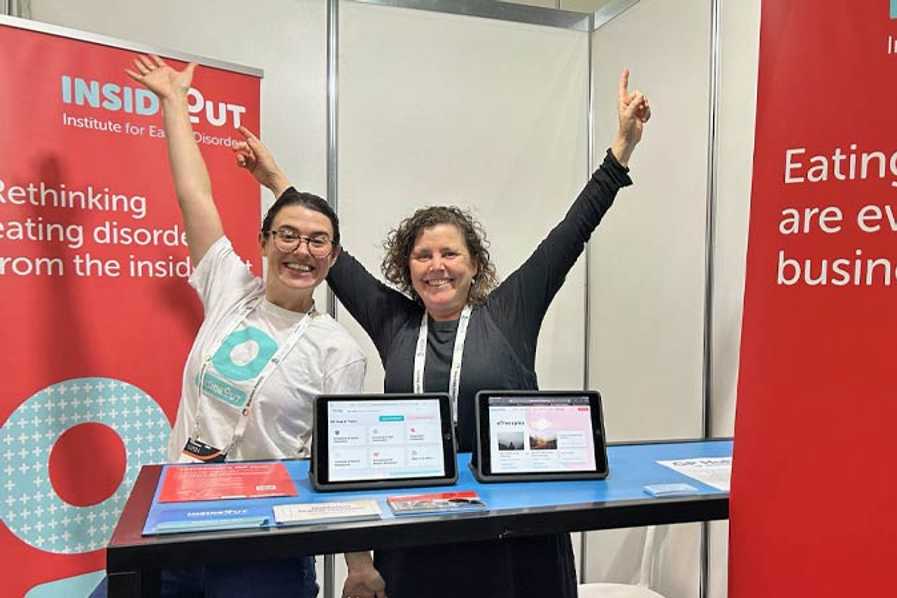
Breaking the silence: Tackling eating disorders in rural Australia through the InsideOut GP Hub
Across Australia’s vast landscapes, from outback towns to coastal farming communities, people living with eating disorders face many barriers in accessing evidence-based care. Specialist services are often hundreds of kilometres away, and the stigma and stereotyping surrounding eating disorders can impact people’s ability to reach out.
1.1 million Australians are currently living with an eating disorder, that is almost 5 percent of the adult population (Deloitte Access Economics, 2024). For those who do receive treatment, only 35 – 40% will receive targeted treatment for their eating disorder (Mond et al., 2007; Noordenbos et al., 2002). For rural communities, where general practice is often the first and only point of contact with the health system, access to evidence-based care is an even greater challenge and GPs are often left supporting their patients waiting for care.
For any GP, supporting patients living with an eating disorder can be time consuming and challenging. Identification in itself can require significant investment to build trust and open a conversation. Once disordered eating has been recognised, many GPs may fear ‘Opening a Pandora’s Box’ to a wealth of complexities and barriers including a lack of knowledge and training, and limited access to care pathways for their patients.
In recognition of this and to support GPs, InsideOut Institute for Eating Disorders in partnership with GPs, nurses, practice managers, carers and people with lived experience, have developed the InsideOut GP Hub — a digital platform specifically designed to support the care of people living with an eating disorder in general practice, including those in rural and remote settings.
The GP Hub brings vital tools and resources into the hands of rural healthcare teams. It offers practical support for screening, diagnosis, referral and care planning that aligns with Medicare billing and fits within the realities of busy regional practices. The platform supports whole-of-practice engagement, making it easier for nurses, reception staff and admin teams to play an active role in patient care.
One of the most valuable features of the GP Hub is its simplicity. It doesn’t require new systems or subscriptions. It integrates with existing workflows, helping rural clinicians save time while improving care. Patients and carers also benefit through access to personalised education packs that help them better understand their condition and treatment options.
For many of the more than 280,000 Australians in rural and remote areas currently living with an eating disorder, this kind of timely, local support can make a world of difference (Butterfly Foundation, 2020). Early intervention is key to better outcomes, and recovery is possible for everyone, regardless of severity or stage of illness (Miskovic-Wheatley et al., 2023; National Eating Disorders Collaboration, n.d.)).
The GP Hub is helping to close the care gap for communities where the distance to treatment has long been too great. By equipping rural health teams with evidence-based, easy-to-use tools, it brings hope and practical solutions to the people who need them most.
To explore the InsideOut GP Hub and see how it can support your practice, visit https://gp.insideoutinstitute.org.au
References
Butterfly Foundation. (2020, May 18). Eating disorders thrive in isolation: COVID-19 delivers a perfect storm for 280,000 regional and remote Australian sufferers [Press release]. https://butterfly.org.au/news/eating-disorders-thrive-in-isolation-covid-19-delivers-a-perfect-storm-for-280000-regional-and-remote-australian-sufferers
Deloitte Access Economics. (2024). Paying the price, second edition: The economic and social impact of eating disorders in Australia. Report commissioned by The Butterfly Foundation. https://butterfly.org.au/wp-content/uploads/2024/04/Paying-the-Price-2nd-Edition-Deloitte-Access-Economics-Report-2024.pdf
Miskovic-Wheatley, J., Bryant, E., Ong, S. H., Vatter, S., Le, A., Touyz, S., et al. (2023). Eating disorder outcomes: Findings from a rapid review of over a decade of research. Journal of Eating Disorders, 11(1), 85. https://doi.org/10.1186/s40337-023-00817-3
Mond, J. M., Hay, P. J., Rodgers, B., & Owen, C. (2007). Health service utilization for eating disorders: Findings from a community-based study. International Journal of Eating Disorders, 40(5), 399–408. https://doi.org/10.1002/eat.20382
National Eating Disorders Collaboration. (n.d.). Other specified feeding and eating disorders (OSFED). Retrieved August 12, 2025, from https://nedc.com.au/eating-disorders/types/other-specified-feeding-or-eating-disorders#:~:text=Most%20people%20can%20recover%20from,and%20a%20mental%20health%20professional
Noordenbos, G., Oldenhave, A., Muschter, J., & Terpstra, N. (2002). Characteristics and treatment of patients with chronic eating disorders. Eating Disorders, 10(1), 15–29. https://doi.org/10.1080/106402602753573540